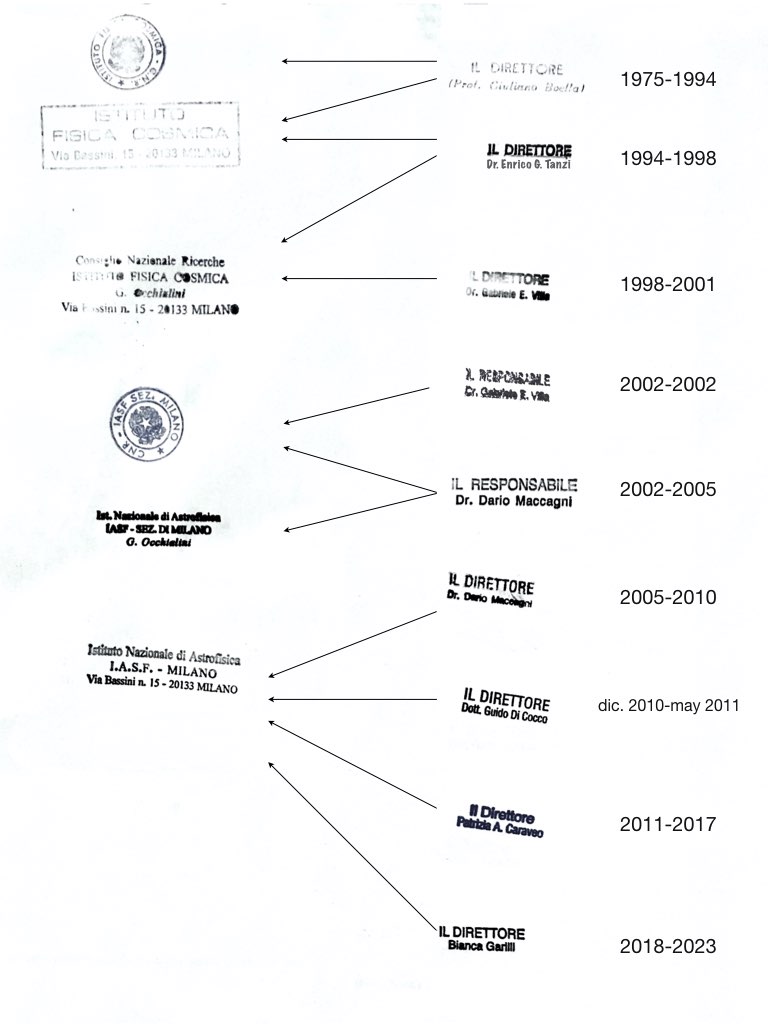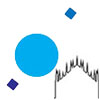by D. Maccagni and G. Villa
The progenitor of our Institute was a research group active since the early ’60s in the Physics Department of the University of Milan. The group was headed by “Beppo” Occhialini and “Connie” Dilworth and included Livio Scarsi, Gianni Degli Antoni, Giuliano Boella, Cesare Perola, Giorgio Sironi, Oberto Citterio. It could count on both an electronics lab and a mechanical workshop, both with excellent technicians (Piero Inzani, Aldo Igiuni, “Pluto” Franchini, Alberto Rancati, Bruno Falconi, Renato “va giò, va giò, che gh’è pulpa” Ballerini, Nino Dell’Era, Enrico Mattaini, Andrea Bussini) to build instruments flown on balloons and small rockets to study cosmic rays. With the advent of the space age and the opportunity to fly intruments on board the first European satellites the group rapidly grew in size and the scientific interests widened to include cosmic ray electrons and positrons, gamma rays, solar neutrons, radiosources and computer science, to which it were soon to be added UV, IR and optical observations, all of these supported by in-house technological developments.
The electronic component of cosmic rays was investigated by means of two experiments on board the European satellites HEOS-1 and HEOS-2: S79 and S209. The main scientific results were about the acceleration and propagation of electrons in the solar corona and during solar flares. Gamma-rays were studied with S88, an experiment on board another Eurpean satellite, TD-1, featuring a spark chamber to become the prototype of the one later flown on COS-B.
All along the ’70s the main characteristics of the group were the presence of foreign researchers (John Bland, Constantinos Paizis, Anthony Dean, Martin Turner), the international collaborations, mainly with Saclay and the MPE, and the affiliations of the people ranging from University to INFN and CNR. The involvement in several balloon and space projects required both more office space than the one that could be provided by the Department of Physics and the possibility to offer positions to the young graduate students: this latter aspect was taken care of by CNR through the creation of the Laboratorio di Fisica Cosmica e Tecnologie Relative (LFCTR). Young people were recruited but used to be sent abroad for some time (Aldo Treves to MIT, Nanni Bignami to Goddard, Dario Maccagni to Cambridge UK, Gabriele Villa to Leicester, Massimo Tarenghi to Arizona, Peppo Gavazzi to Leiden). As for office space, a small group led by Connie and including some theoreticians (Aldo Treves, Laura Maraschi and Cesare Reina) and the researchers mainly involved in data analysis moved first into a rented apartment and then to the “capannino”, a new small building inside the courtyard of the Physics Department. At the same time a search for a suitable building was going on and when it was finally found in via Bassini, Beppo and Connie retired and Giuliano Boella was appointed Director of LFCTR, which in the meantime had become an Institute (IFCTR).
Early in the ’70s, Beppo said: “IR astronomy is just starting, so whatever you do will be important”. And the TIRGO (Telescopio IR al Gornergrat) was born thanks to Citterio, Paolo Di Benedetto and the mechanical workshop.
A collaboration with the University of Leicester was started to search for X-ray clusters in Ariel-V data.
Nanni Bignami found a puzzling gamma ray source which was named Geminga and COS-B produced a gamma-ray map of the galactic plane.
Riccardo Giacconi (who was a former Beppo’s student) paid us a visit and invited us to submit proposals to the Einstein Guest Observer Program: as a consequence, Dario Maccagni with Massimo Tarenghi established BL Lac objects as a new class of X-ray sources and their time variability and energy spectra were studied. Later on this sample of six objects was enlarged using Exosat guaranteed time.
The ’80s were characterized by important developments in Gamma and X-ray astronomy (COS-B, Exosat, XMM, BeppoSax) and in computer science. At the same time, Guido Chincarini became director of the Brera Observatory and when Enrico Tanzi was appointed director of IFCTR strong ties were built. People also moved around: Perola to Rome University, Sironi to Milan University, Tarenghi to ESO, Bignami to Cassino University, Maraschi, Gavazzi and Citterio to Brera, where career opportunities were better. But IFCTR staff gained new people, first Patrizia Caraveo and Lucio Chiappetti, then Sandro Mereghetti, Bianca Garilli and Marco Bersanelli. In collaboration with Sironi, Bersanelli started research on the CMB within the Institute, in view of what became the Planck Observatory.
When Italy joined ESO and active optics were to be the NTT added value, Citterio and Mattaini designed and manufactured the actuators of the 1-meter prototype mirror, now on display at the Deutsche Museum in Munich.
It was also the time of large balloon experiments led by Francesco Perotti and Gabriele Villa: gamma rays from AGNs were studied with MISO (Milan-Southampton, also known as Gamma-10) flown from Palestine, Texas and hard X-rays from AGNs and binary systems with a long series of launches of X-Pallas, either from Palestine or from Trapani Milo.
Important technological achievements took place: the electroforming technique to manufacture X-ray reflecting mirrors and corrugated feed horns was developed in our mechanical workshops and then passed to the industries who would make the BeppoSax mirrors and the Planck LFI horns.
By the end of the ’90s X-ray and gamma-ray astronomy were in high shape with BeppoSax and XMM-Newton. In those years, our Institute was also already contributing to the construction of the gamma-ray satellites INTEGRAL and Agile, still operational. At the same time, participation in the first redshift surveys led the way, on one side to the development of astronomical software, and on the other hand to an important role in the building of a a multiobject imaging spectrograph for the VLT (VIMOS) and the several surveys which stemmed from it (VVDS Wide and Deep, zCosmos, VUDS, Vipers and nowadays VANDELS). IFCTR, that was first unified with the other three CNR Institutes in Bologna, Rome and Palermo and became independent again as IASF Milano, was ready to join the National Institute for Astrophysics (INAF) in 2005.

The content of this page is licensed under a Creative Commons Attribution-NonCommercial 4.0 International License.

